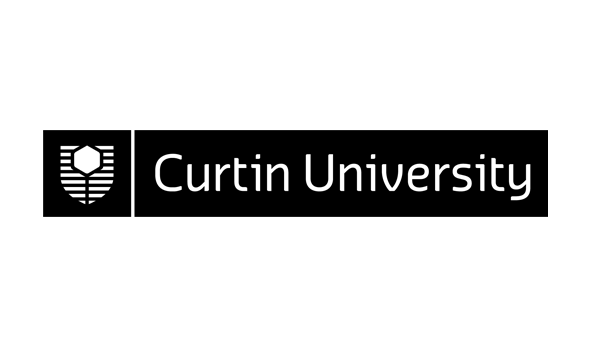310535 v.1 Master of Engineering Science (Communications Networks)
MEngSc(Curtin)
Course CRICOS Code: 058863G
Registered full-time Duration for International Onshore Students on student visas: 2 Years
Introduction
Over the last three decades, the growth in communications has been significantly higher than almost any other industrial field. Over this time, though, there has been a shift from traditional telecommunications to data communications and especially networks where hundreds and in many cases thousands of electronic systems are interconnected. While the Internet continues to attract much of the publicity, the greater significance has been the adoption of networks by numerous organisations to support their internal activities. This may be as simple as supporting their PC networks in administration functions to supporting their manufacturing, support, marketing and service activities. All of these are expected to grow strongly in the future. Naturally there are many companies providing components for such networks. However, there is also the need for engineering teams to select and configure such components into an effective network that supports an organisation's objectives. Equally, there is a need to manage, support and evolve existing networks so that can meet current and future requirements. This is the thrust of this degree.
Course Entry Requirements/Prerequisites
A Bachelor of Engineering degree in electrical, communications and/or electronics, computer engineering or a related discipline from a recognised university. That degree must include topics on circuit theory, probability theory, signal processing, computer programming and Fourier analysis.
Recognition of Prior Learning
Applications for recognition of prior learning are assessed on an individual basis.
Duration and Availability
This fee paying course is two year full-time study (75 credits per semester). Two intakes are offered each year in March and August.
Course Organisation
The course is three units per semester for a total of four semesters.
Professional Recognition
Students entering this degree are assumed to have achieved professional recognition through their undergraduate degree or industrial activities.
Career Opportunities
This degree is designed to add to the skills a student has gained in an appropriate undergraduate degree. As such, it will enhance the ability of students to gain employment with organisations undertaking the systems design of communications networks. Equally, those who plan to enter the field of managing such networks will find the degree of value. Prospective employers include public carriers as well as most larger organisations supporting private networks such as resource companies, retailers, financial institutions and government departments.
Additional Course Expenses
Students may be expected to purchase a number of textbooks, readers and other essential study materials.
Course Structure |
Hrs/Wk |
Credit |
|||
Year 1 Semester 1 |
|||||
| 11330 | v.4 | Digital Communications Engineering 601 | 4.0 | 25.0 | |
| 11341 | v.4 | Stochastic Processes for Telecommunications Systems 601 | 4.0 | 25.0 | |
| 309044 | v.1 | Network Design 603 | 6.0 | 25.0 | |
| 75.0 | |||||
Year 1 Semester 2 |
|||||
| 11335 | v.4 | Network Design 602 | 6.0 | 25.0 | |
| 5638 | v.5 | Digital Signal Processing 603 | 5.0 | 25.0 | |
| 5681 | v.5 | Digital Communications 603 | 4.0 | 25.0 | |
| 75.0 | |||||
Year 2 Semester 1 |
|||||
| 307639 | v.1 | Digital Signal Processing for Wireless Communications 602 | 2.5 | 25.0 | |
| 307640 | v.3 | Broadband Networks 602 | 3.0 | 25.0 | |
| 309037 | v.1 | Wireless Data Networks 603 | 6.0 | 25.0 | |
| 75.0 | |||||
Year 2 Semester 2 |
|||||
| 11333 | v.4 | Mobile Radio Communications 602 | 5.0 | 25.0 | |
| 307641 | v.1 | Telecommunication and Network Management 602 | 3.0 | 25.0 | |
| SELECT OPTIONAL UNITS TO THE TOTAL VALUE OF: | 25.0 | ||||
| 75.0 | |||||
| Optional Units to Select From in Year 2 Semester 2 | Hrs/Wk | Credits | |||
| 5506 | v.6 | Microcomputer Systems 603 | 4.0 | 25.0 | |
| 11338 | v.3 | Computer Aided Engineering of Digital Systems 601 | 3.0 | 25.0 | |
| 309042 | v.1 | Data Network Security 604 | 6.0 | 25.0 | |
Availability
| Year | Location | All* | Internal | Partially Online Internal^ | External | Fully Online# | |
| 2007 | Bentley Campus | Semester 1 | Y | ||||
| 2007 | Bentley Campus | Semester 2 | Y | ||||
| 2008 | Bentley Campus | Semester 1 | Y | ||||
| 2008 | Bentley Campus | Semester 2 | Y |
The information displayed above refers to study periods and locations where the course is available for first time entry. Students are normally only offered or admitted to a course once.
*The course itself may not be available either solely internally or externally but individual units may be offered in either or both of those modes. Prospective students should contact the Course Coordinator for further information.
^Course and associated units are offered in this mode permitting International Onshore student enrolment.
#Course and associated units are offered in this online only mode and DO NOT permit International Onshore student enrolment.

